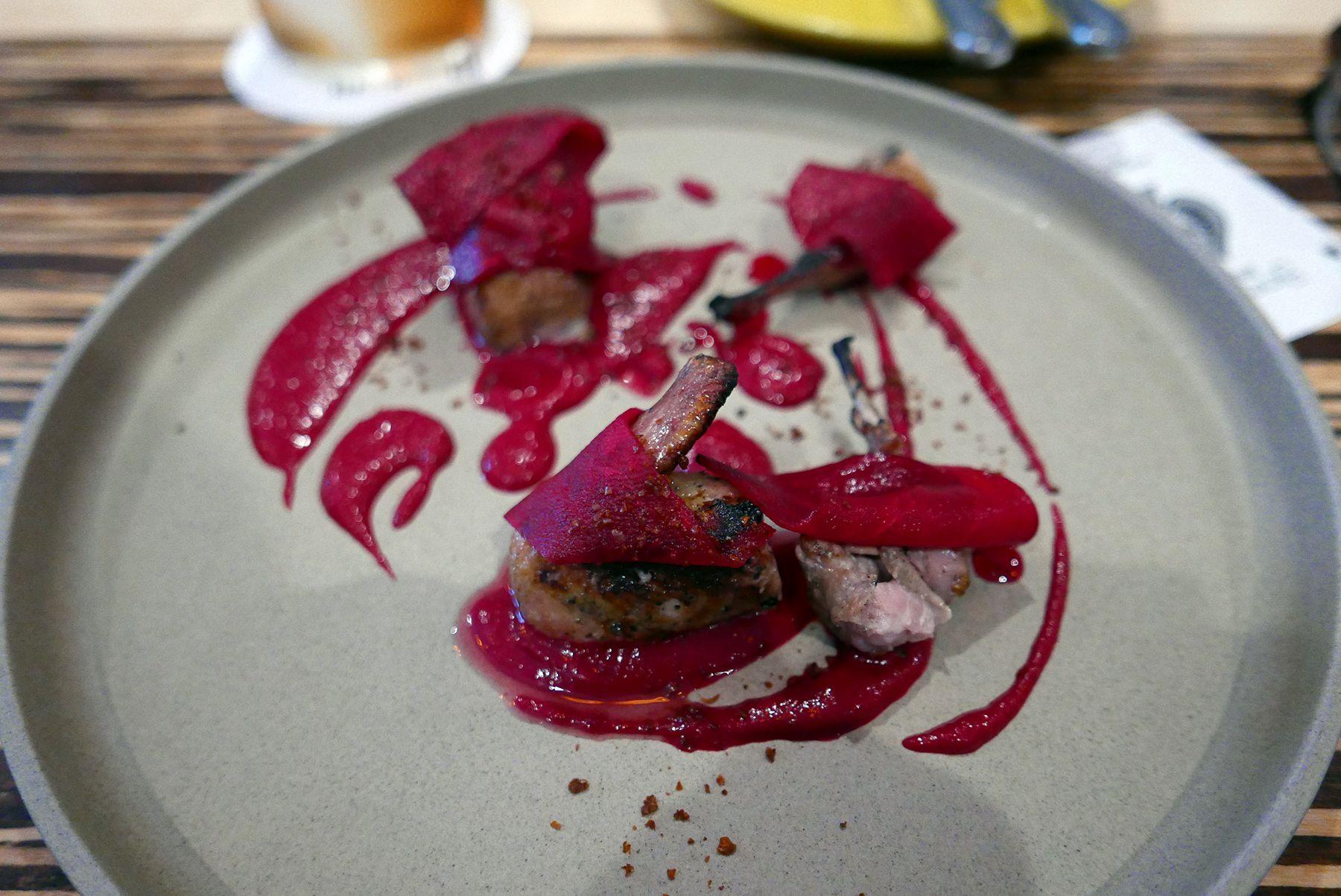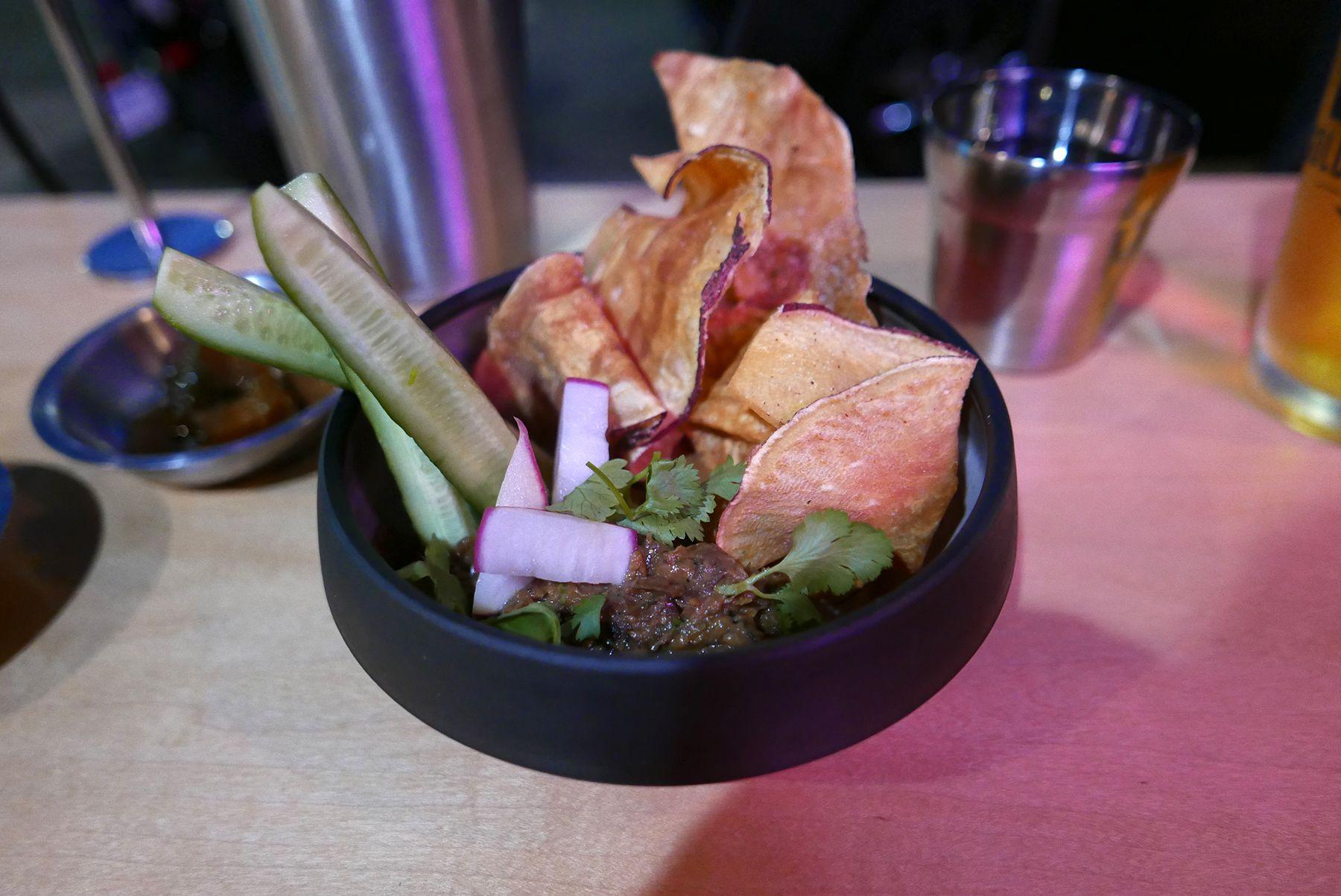Flavor, at its most sterile, is detected on the tongue and further clarified in the back of the nose. Most flavors we encounter reach the end of their journey then and there. Others linger. The ones that transcend the moment sublimate into something else entirely. They are shepherded into a hidden archive, a collection of reference points stored and accessed through the brain’s limbic system. Those are perfect flavors, and inside all of us is a gallery full of them.
I think about perfect flavors constantly, which is to say I meditate about memory. For as long as I can remember, I’ve been obsessed with gaining entry to that liminal space, where connections are made between the larger world and your own small corner of it and the sparks that register as epiphanies. It’s often a fruitless endeavor; it’s not something you will into being. It just happens. As David Chang described it in his 2016 Wired essay, a perfect flavor “makes you very aware of what you’re eating and your own reaction to it. It nags at you, and it keeps you in the moment, thinking about what you’re tasting. And that’s what makes it delicious.” That flash of self-awareness is much easier to come by when the world is still small, when one moment isn’t competing with the deluge of experiences that comprise daily adult life; that’s why so many revelatory food experiences seem like echoes from childhood.
But it’s maddeningly ephemeral! It’s no wonder, then, that communities like Yelp and social media platforms like Instagram have become havens for the food obsessed. Photos and text descriptions are vain attempts at reconstructing in a physical space what was once only experienced internally (and rarely validated by others so readily). There is something bizarre about that impulse, but epiphanies can make us do strange things. After all, what is a yelp but a shout into the void?
Documenting flavor memories might be like catching lightning in a bottle, but for me it’s less about creating a certificate than it is about making sense of the context a flavor has established in my life. I keep mental images of my 9-year-old self eating a lemony salad of watercress and rare horse meat (it’s like lean beef, but with a cleaner aroma when grilled) while kneeling beside the living room table in my grandparents’ house at a family gathering in Wiesbaden, Germany. None of my cousins touched the stuff, but my brother and I gladly dug in. I remember my dad grinning, telling his siblings and parents that we weren’t afraid of anything. That’s a token of my father’s pride I carry with me always, as someone who feels like a coward on his best and worst days. That memory set into motion this dogged, futile pursuit I find myself in to this day, and probably will for the rest of my life.
For many Americans, one of the first perfect flavors we encounter is ketchup—specifically Heinz ketchup. Malcolm Gladwell once wrote a 5,000-word New Yorker story on its objective perfection, on how it is a marvel of sensory analytics. Heinz is exactly the right level of too sweet, too salty, too sour, and too bitter, such that, in conjunction, it is perceived as none of those things. It is the Vitruvian condiment. It’s impervious to blind taste tests; even if it’s not the outright winner, Heinz is the standard-bearer, the flavor against which all other competitors are judged.
Of course, perfection doesn’t always correspond with enjoyment. Perfection isn’t immune to the law of diminishing returns, especially over the course of a lifetime. Last week, the Ringer staff had a particularly spirited debate about the merits of ketchup. While there were fanatical partisans on both sides of the divide (“Ketchup is the worst thing since polio,” said one writer), most settled into the uninspiring middle. Ketchup, by most accounts, is fine. “Fine” is generally my descriptor of choice for completely unmemorable meals.
This might be a good time to admit what might be a heretical opinion: I’ve always preferred Hunt’s to Heinz. Except when paired with french fries, ketchup has always been more of a kitchen tool in my family than a stand-alone condiment. I’ve used it as a way to add depth to fried rice; it’s my mom’s secret ingredient in her Vietnamese beef stew. Hunt’s has stronger acidic profiles than Heinz, and that vinegary bent coheres with my family’s general palate. I have distinct memories of my elementary school days when my dad wanted to give the all-American diet a test run. He’d prepare cans of Campbell’s chicken noodle soup for the two of us, but was horrified by how little it tasted of anything other than salt. He’d doctor the soup with ketchup (and a little bit of Sriracha) to provide the cay chua ngọt—the spicy-sour-sweet components that are at the foundation of Vietnamese culinary sensibility—without folding from the constraints of using strictly American flavors. My dad’s experiment didn’t last long, but it didn’t have to. As children, smothering literally anything in ketchup establishes a tether to the warmth of familiarity amid a world of strange. Kids can do some heinous things with a squeeze bottle of Heinz, the culinary equivalent of a safety blanket. But eventually we leave safety blankets in the past.

One of the founding dishes at Here’s Looking at You, a nationally acclaimed restaurant in the Koreatown neighborhood of Los Angeles, was grilled quail draped in thin slices of pickled beets, like a velvet robe, surrounded on all sides by a blood-red barbecue sauce, also made with beets. In celebration of their two-year anniversary, the staff favorite was briefly put back on the menu. The dish, while artfully plated, conjures a scene plucked right out of an all-American childhood, and subverts the notion just a bit. It asks you to imagine your 5-year-old self trying quail for the first time, your elders convincing you it tastes just like chicken; it plays upon the juvenile impulse of dragging that tiny wing through a marsh of Heinz ketchup as a way of softening the blow of trying something new. Except the “ketchup” is made of beets, one of the quintessential I hated it as a kid foods. Of course, the sauce isn’t labeled as ketchup, which is why the distinct play on memory works at all. There is nothing implicit about ketchup. It is maximalist to the point of dullness. Labeling the sauce as such would have broken the illusion before it even began. To call something ketchup is to create a rigid expectation. In sidestepping that expectation, the dish achieved something that ketchup, by nature, cannot: subtlety.
Like all great food cultures, L.A.’s culinary landscape wrestles with the tension between tradition and the subversion of said traditions, between telling it how it is and telling it how it could be. Lien Ta and Jonathan Whitener have created a kaleidoscope of a California restaurant in Here’s Looking at You, finding the soul-satisfying center of both French and American Southern cuisine in a porridge dish, taking traditionally Southeast Asian ingredients and decontextualizing them in a crudo. It exists in a Koreatown enclave where nearly all of the best restaurants are owned and operated by immigrant families sharing a specific taste of home. I’ve been shaped by those kinds of traditions, having spent my entire life in a similar enclave some 15 miles east. As much as my palate expands, it will always be rooted in my experience within that community.
The immutability of ketchup makes it impossible to present as anything other than ketchup, but not all perfect flavors are restricted by their suggested forms. When I think about one of my favorite dishes I’ve eaten this year, I think of the loathing my 17-year-old self would radiate upon hearing the tagline: a vegetarian eggplant appetizer from We Have Noodles, a pan-Asian restaurant in the hip Los Angeles neighborhood of Silver Lake. It reads like a socially engineered Mad Libs for the last dish I’d ever think to order, let alone enjoy. Yet, there I was, on a Wednesday night last month, marveling at its deeply savory take on nahm prik noom and jeow mak keua, the Thai and Laotian versions of a roasted eggplant dip.
The eggplant, arguably the most perfect phallic symbol of a generation since Michelangelo’s David during the Renaissance, is a vegetable of few merits in its natural state. Like the potato, its distant cousin under the nightshade family tree, eggplant is not exceptionally nutritious, nor is it all that edible raw. But also like the potato, its potential is unlocked with heat. Though its flesh yields easily under the influence of fire, it’s also somewhat of a masochist, finding the outer limits of its flavor once it straddles the line between roasted and burnt. As eggplant cooks, the bitterness of its raw state melts into a muted, nondescript sweetness that blends in amid more dominant flavors; as it chars, eggplant becomes a capsule of its own smoke, absorbed and distilled through its network of fibers.
Darren Sayphraraj, the 29-year-old chef/owner of We Have Noodles, roasts his eggplants until they reach a deep char, and it’s that intense smoke and caramelization that creates the foundation for a dip as umami-laden as any meat-based dish. It’s a showcase of the eggplant’s salient culinary traits, which have to be coaxed out of hiding. Cooked with a procession of familiar aromatics (shallots, garlic, ginger) and finished with khao khua (toasted sticky rice powder, which adds body and nuttiness), the dish is something of a Rorschach test of Asian memory; my first bite reminded me of Taiwanese minced pork.

Jeow is generally served with fresh vegetables, but Sayphraraj also includes a bundle of Japanese sweet potato chips dusted with a seasoning so embedded in my childhood I couldn’t for the life of me recognize what it was in this new context. My eyes bulged, then retreated behind closed lids—the standard Proustian response. When Sayphraraj made the rounds checking in on tables, I blurted out, “Is this crack on these chips?” He laughed. Turned out I was close.
The plan for those chips always included some sort of seasoning that would replicate the experience to tasting tom yum, the ubiquitous hot-and-sour Thai soup base powered by a redolence of kaffir lime leaves, galangal, lemongrass, and chiles. As Sayphraraj described his thought process, the flavor had suddenly clicked: It was the contents of a tom yum seasoning packet from the Thai instant noodle manufacturer Mama, my lifeline throughout childhood and into college.
In that moment of clarity, I felt kinship; Sayphraraj was a San Gabriel Valley kid who lived a city away from me, who grew up on the same flavors, and had similar food memories. It tapped into my greatest fascination these days about one of the best food cities in the United States: How the next great cooks of my generation, similarly stuck in the middle between community tradition and multicultural experiences just beyond their particular bubble, find their voice, and the flavor memories that inspire them. Mama’s seasoning had the perfect blend of salt, sugar, MSG, and crystallized citric acid. It already hit all the right notes, Sayphraraj reasoned. It was a perfect flavor. There could be no substitute.
